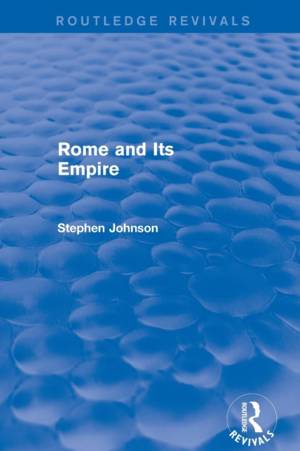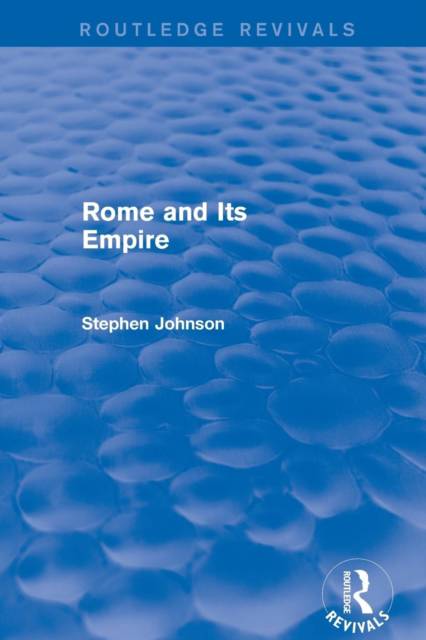
- Retrait gratuit dans votre magasin Club
- 7.000.000 titres dans notre catalogue
- Payer en toute sécurité
- Toujours un magasin près de chez vous
- Retrait gratuit dans votre magasin Club
- 7.000.000 titres dans notre catalogue
- Payer en toute sécurité
- Toujours un magasin près de chez vous
Description
The legacy of Rome is still very much with us in Europe. It forms part of our cultural backdrop, and is enshrined in the European mind, whether through classical literature, education and jurisprudence, or spectacular ruins. In Rome and Its Empire, first published in 1989, Stephen Johnson examines our understanding of the archaeological aspects of Roman civilisation, and traces the development of archaeology from the earliest post-Roman times, through to its real discovery in the eighteenth century, and its burgeoning in the nineteenth and twentieth centuries.
Various areas of modern archaeological thought and practice are examined with regard to the study of Roman archaeology. The emphasis is on how archaeologists examine and classify material, and the various ways in which valid historical conclusions are deduced from that evidence. Johnson concludes by exploring how techniques from other disciplines are now being applied to archaeological study, and indicates what we may yet learn from this.
Spécifications
Parties prenantes
- Auteur(s) :
- Editeur:
Contenu
- Nombre de pages :
- 254
- Langue:
- Anglais
- Collection :
Caractéristiques
- EAN:
- 9780415744768
- Date de parution :
- 12-06-15
- Format:
- Livre broché
- Format numérique:
- Trade paperback (VS)
- Dimensions :
- 156 mm x 234 mm
- Poids :
- 258 g







